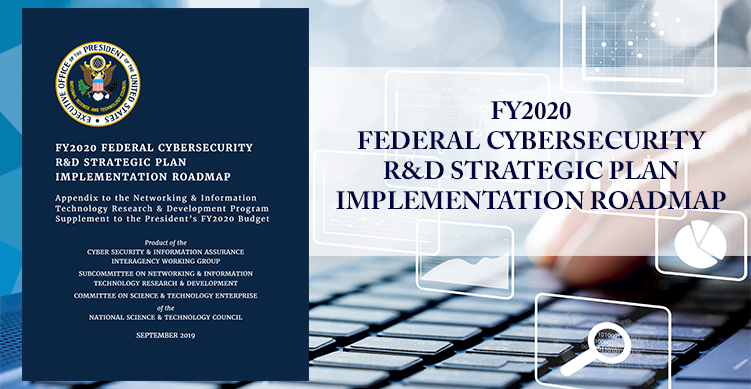View Full Text: FY2020-Cybersecurity-RD-Roadmap.pdf
This document provides FY2020 implementation details for the 2016 Federal Cybersecurity Research and Development Strategic Plan, developed by the Networking and Information Technology Research and Development (NITRD) Program’s Cyber Security and Information Assurance (CSIA) Interagency Working Group (IWG). This Strategic Plan Implementation Roadmap is provided per statutory requirement for public provision of this information pursuant to the Cybersecurity Enhancement Act of 2014, Public Law 113-274, Section 201(a)(2)(D), Implementation Roadmap, and under direction from the NITRD Subcommittee of the National Science and Technology Council Committee on Science and Technology Enterprise. This document accompanies the NITRD Supplement to the President’s FY2020 Budget.
Agencies participating in the CSIA IWG report their research and development (R&D) programs in the Cyber Security and Privacy Program Component Area in alignment with the research objectives of the Federal Cybersecurity Research and Development Strategic Plan. The four strategic defensive elements of the strategic plan consist of Deter, Protect, Detect, and Adapt, as defined below:
- Deter: The ability to efficiently discourage malicious cyber activities by measuring and increasing the costs to adversaries who carry out such activities, diminishing their spoils, and increasing risks and uncertainty of consequences for cyber attacks.
- Protect: The ability of components, systems, users, and critical infrastructure to efficiently resist malicious cyber activities and to ensure confidentiality, integrity, availability, and accountability.
- Detect: The ability to efficiently detect, and even anticipate, adversary decisions and activities, given that perfect security is not possible and systems should be assumed to be vulnerable to malicious cyber activities.
- Adapt: The ability of defenders, defenses, and infrastructure to dynamically adapt to malicious cyber activities by efficiently reacting to disruption, recovering from damage, maintaining operations while completing restoration, and adjusting to be able to thwart similar future activity.
The FY2020 Implementation Roadmap, which accompanies the NITRD Supplement to the President’s FY2020 Budget, maps the Federal agency programs across these four areas.


